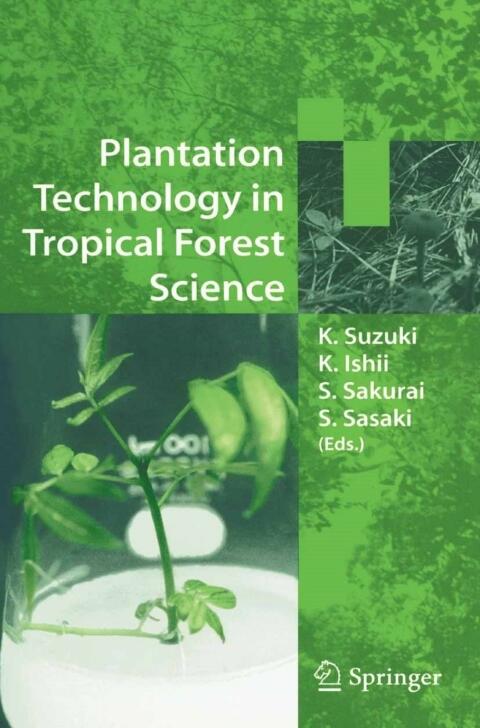
Plantation Technology in Tropical Forest Science
بواسطة
Evgeny G. Gurvich
لا توجد تقييمات بعد
Science & Technology
Health & Wellness
تنسيق
كيندل
صفحات
301
لغة
ياباني
منشور
Jan 1, 2006
الناشر
Springer
الطبعة
1
رقم ISBN-10
4431280545
رقم ISBN-13
9784431280545
الوصف
In this insightful work, Evgeny G. Gurvich delves into the intricate link between plantation technology and tropical forest science. With a strong emphasis on eco-sustainability, the author presents a comprehensive overview of biotechnological advancements that are shaping the future of reforestation efforts in tropical regions. Through detailed accounts of various projects, readers gain an appreciation for the complexities and challenges of restoring fragile ecosystems.
Drawing from extensive research and field studies, the narrative reveals the innovative strategies employed in the Biotechnology-Assisted Re/Afforestation Project. This initiative serves as a beacon of hope in the face of deforestation and environmental degradation, showcasing how technology can enhance traditional methods and achieve more effective results. Gurvich’s passion for conservation and commitment to scientific progress shines throughout the book, making it both an educational resource and a call to action.
As the book progresses, the reader is introduced to diverse case studies that underscore the project’s impact on local communities and biodiversity. These examples illustrate the importance of collaboration between scientists, policymakers, and indigenous populations in fostering a collective approach to forest management. Gurvich’s work also emphasizes the importance of species selection, soil management, and ecological balance in achieving successful reforestation outcomes.
Overall, this book serves as a vital contribution to the fields of forestry and environmental science, emphasizing the necessity of integrating technology into our conservation practices. It invites readers to reflect on their responsibilities toward the planet and explore practical solutions for a sustainable future in tropical forestry.
Drawing from extensive research and field studies, the narrative reveals the innovative strategies employed in the Biotechnology-Assisted Re/Afforestation Project. This initiative serves as a beacon of hope in the face of deforestation and environmental degradation, showcasing how technology can enhance traditional methods and achieve more effective results. Gurvich’s passion for conservation and commitment to scientific progress shines throughout the book, making it both an educational resource and a call to action.
As the book progresses, the reader is introduced to diverse case studies that underscore the project’s impact on local communities and biodiversity. These examples illustrate the importance of collaboration between scientists, policymakers, and indigenous populations in fostering a collective approach to forest management. Gurvich’s work also emphasizes the importance of species selection, soil management, and ecological balance in achieving successful reforestation outcomes.
Overall, this book serves as a vital contribution to the fields of forestry and environmental science, emphasizing the necessity of integrating technology into our conservation practices. It invites readers to reflect on their responsibilities toward the planet and explore practical solutions for a sustainable future in tropical forestry.



















